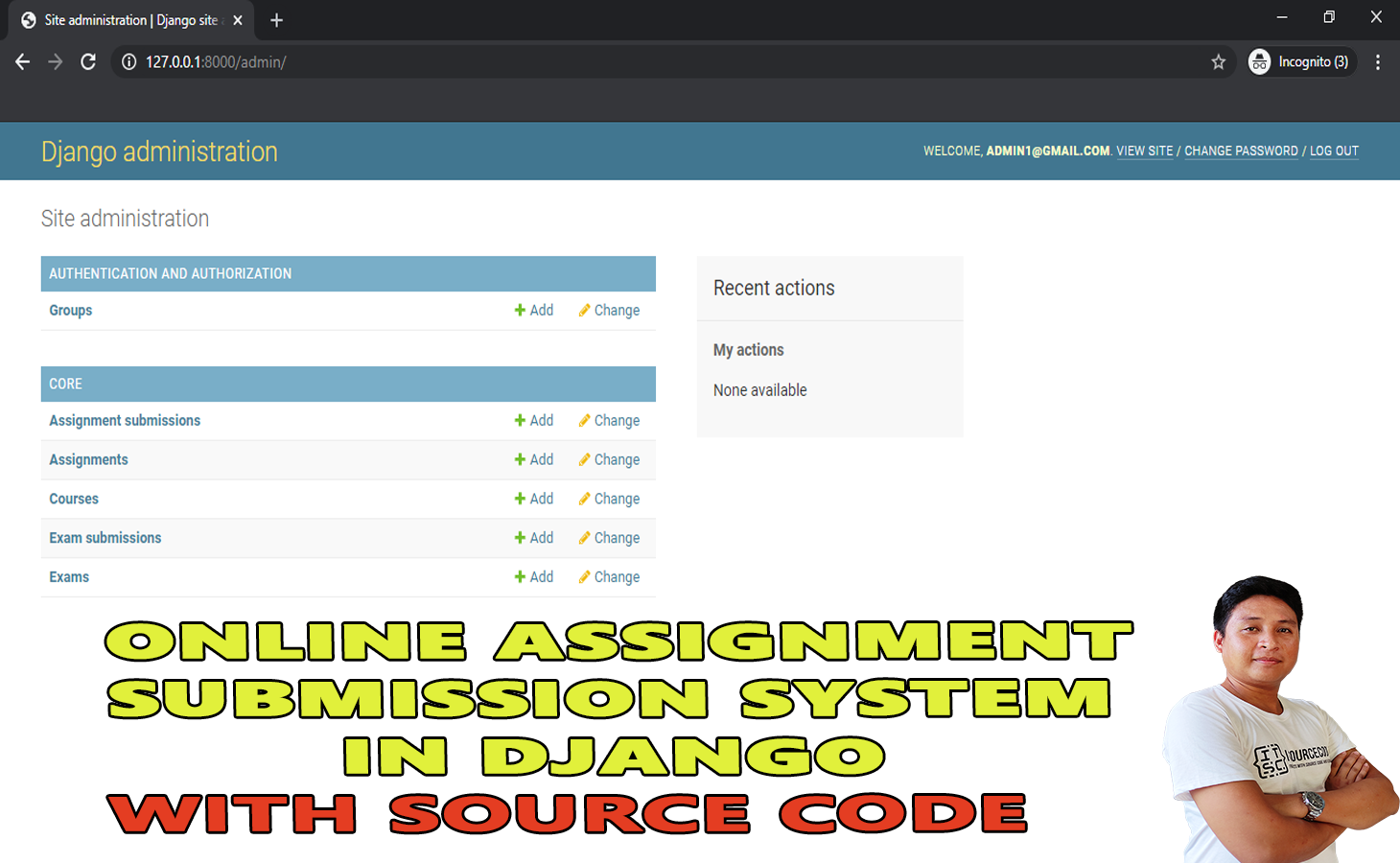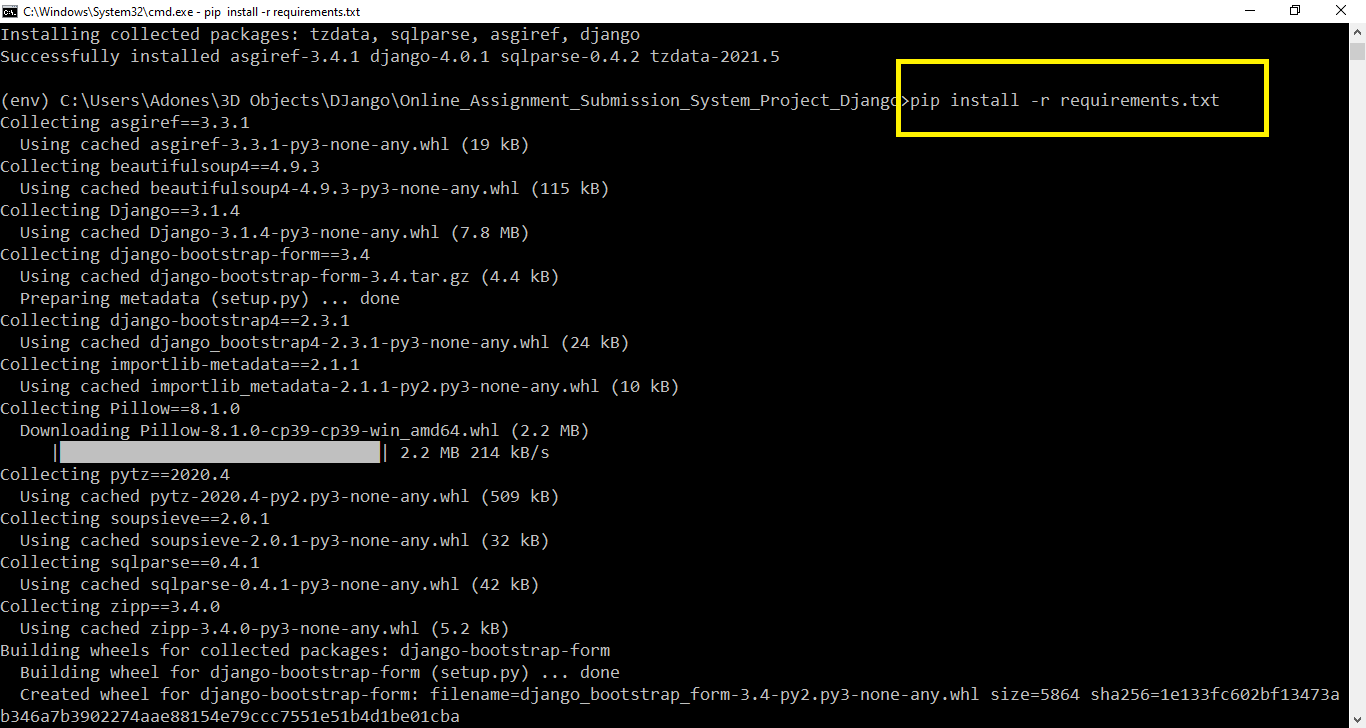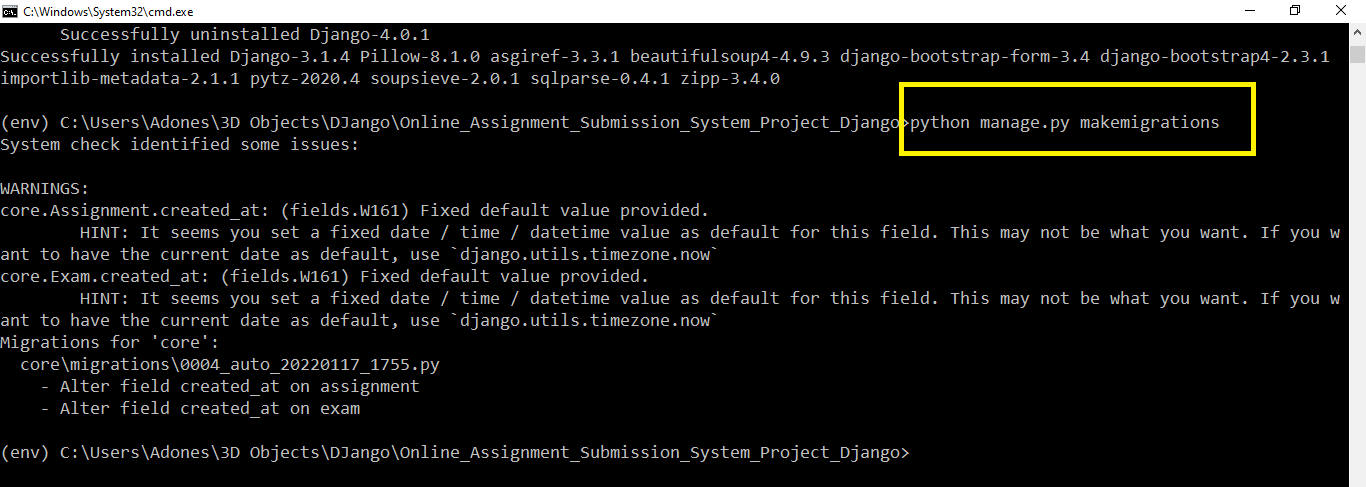Online Assignment Submission System in Django with Source Code – This Django-based Online Assignment Submission System project is written in Python.
We created an Online Assignment Submission gateway using Python, Django, and a SQLite3 database to make it easy for students to submit their practicals and assignments online.
This is a role-based module in which teachers and students can manipulate the data in whatever way they like.
As Django, an online assignment submission system allows students to upload their assignments or projects rather than sending them in a module file.
By minimizing and limiting human error, the proposed method assists teachers in the monitoring and handling of students.
What is an Online Assignment Submission System?
The Online Assignment System is a web-based module that allows students and professors to exchange information regarding assignments and questions.
Students can submit assignments, and professors can edit and score them.
The best response will be uploaded as the best answer, and students can refer to it as notes.
Why do we use an Online Assignment Submission System?
All students, regardless of where they are in the world, can function on the same schedule by dealing with assignment submissions electronically over the internet.
\No one has to set aside time to send assignments via ordinary mail. The amount of paper that must be handled is reduced when using an electronic system.
Who are the Beneficiaries of the Online Assignment Submission System
Learners, their families, and their communities are the ultimate beneficiaries: particularly learners from low-income families and other disadvantaged groups, whose prospects of acquiring a good education and reaping the advantages will be considerably improved.
Definition of terms of Online Assignment Submission System
- Assignment – As part of a job or course of study, someone is assigned an assignment or piece of work.
- Student – A learner or someone who attends an educational institution is referred to as a student or pupil.
- Online – The term “online” refers to a condition of connectedness.
- Lecturer – Lecturer: A lecture is an oral presentation given by a university or college professor to deliver information or teach people about a specific subject.
- Submission – The act of offering a proposal, application, or other document for evaluation or judgment is known as submission.
Major Functionalities Used in Online Assignment Submission System in Django
Features of Online Assignment Submission System in Django in the student side:
- Manage Student Profile – The student updates his or her information details in the student profile.
- Registration – Before registering, students must first register in order to make their own account.
- View Assignments and Exams – Students can view their assignments and exams on this page.
- Login – By default, students must first log in to gain access to the system.
- View Course – The student can view all of their courses for the course.
Features of Online Assignment Submission System in Django in Teacher side:
- Manage Teacher Profile – The teacher can update his or her information details in the teacher profile.
- Registration – To begin the registration process, the teacher must first create their account.
- Create Course – The teacher can add and amend course details in this section.
- Login – By default, the teacher must first log in to gain access to the system.
- Create Exam – The teacher can create and change exam information for the exam.
- Create Assignment – The teacher can create and change assignment information for the assignment.
Online Assignment Submission System in Django Steps on How to Create a Project
Time needed: 3 minutes
These are the steps to run an Online Assignment Submission System Project in Django
- pip install virtualenv
First, You need to install the virtualenv, Open a command prompt by going to the project folder directory and typing CMD. After opening the CMD type ” pip install virtualenv “.

- virtualenv env
Then, after installing virtualenv just type “virtualenv env” and enter.
A virtual environment is a tool that creates separate Python virtual environments for distinct projects to keep their dependencies separate.
Most Python programmers utilize this as one of their most significant tools.
- cd env/Scripts
Next, just type ” cd env/Scripts ” and press enter. It can be any script that includes data loading, processing, and cleaning, or any ML phase while developing an application when putting business logic directly in views or models isn’t always the best option.

- activate
Next, you need to type “activate” and then press enter.
The virtual environment will be turned on, and you’ll see “(project-name)” next to the command prompt to identify it.
You’ll have to activate the environment every time you open a new command prompt.
- cd ../..
Next, just type ” cd ../.. ” and press enter.

- Install Django
Next, type the command “pip install django”. This will download and install the most recent version of Django.
After the installation is complete, use the command prompt to check your Django installation by typing django-admin —version.
- pip install -r requirements.txt
Next, after installing the django type this command “pip install -r requirements.txt”. This is a prerequisite.
The txt file contains a list of all the modules required for the Django project to run.
These are all the modules that the Django project requires to run, such as matplotlib, django-allauth, scipy, numpy, and so on.
- python manage.py makemigrations
Next, after installing the Django type this command ” python manage.py makemigrations ” to create a table in the database.
Makemigrations provides SQL instructions for preinstalled applications (which can be seen in installed apps in settings.py) and your newly generated apps’ model, which you may add to installed apps.
Those commands in your database file are not executed. As a result, no tables are created after makemigrations.
- python manage.py migrate –run-syncdb
Next, after making migrations type this command ” python manage.py migrate –run-syncdb ” to migrate the tables in the database.
Initial database tables (including auth, auth group permission, Django admin log, and others) will not be generated if you don’t use syncdb before completing the migration.
- python manage.py createsuperuser
After the migration of the database you need to create a super user to login into the admin account, just you need to type the command ” python manage.py createsuperuser “.
Using manage.py, you may establish a “superuser” account with complete access to the site and all necessary permissions.
To create the superuser, run the following script in the same directory as manage.py. You’ll be asked to create a username, email address, and a secure password.
- python manage.py runserver
Lastly, after creating a super user just type the command ” python manage.py runserver “.
It should only be used for testing and launching your project; it should not be utilized for live website deployment.
The runserver management command is designed for purposes other than running a web server. The development server automatically reloads Python code for each request as needed, which is ideal for local development but would add extra overhead in a production setting (source):
- http://127.0.0.1:8000/
Finally, to access your project dashboard, type or copy this “http://127.0.0.1:8000/” into your browser.
It is possible to imitate a web-server environment with localhost, and it is most commonly used to simulate web applications operating on a web server.
The port number on which the browser communicates to the server is 8000.
Project Details and Technology
This section contains information about the project and the technology used in this system.
| Project Name: | Online Assignment Submission System in Django with Source Code |
| Language/s Used: | Python Django |
| Python version (Recommended): | 3.9 |
| Database: | SQLlite3 |
| Type: | Web Application |
| Developer: | SOURCECODEHERO |
| Updates: | 0 |
Download the Source Code Here!
Conclusion
To summarize, students and professionals interested in learning the Python Django programming language will find this Online Assignment Submission System useful.
This project can be customized to your exact requirements. I hope you find this assignment useful in honing your skills.
This is how you create an Online Assignment Submission System in Python. You can always try new approaches to implement the Online Crime Reporting System in Django in your Django projects.
This Mini Project for an Online Assignment Submission System is available for free download and use strictly for educational purposes. It’s easy to grasp and use.
Related Articles
- Museum Management System Project in Django with Source Code
- Wedding Management System Project in Django with Source Code
- Live Chat System in PHP Free Source Code
Inquiries
If you have any questions or suggestions about the Online Assignment Submission System in Django with Source Code, please feel free to leave a comment below.












